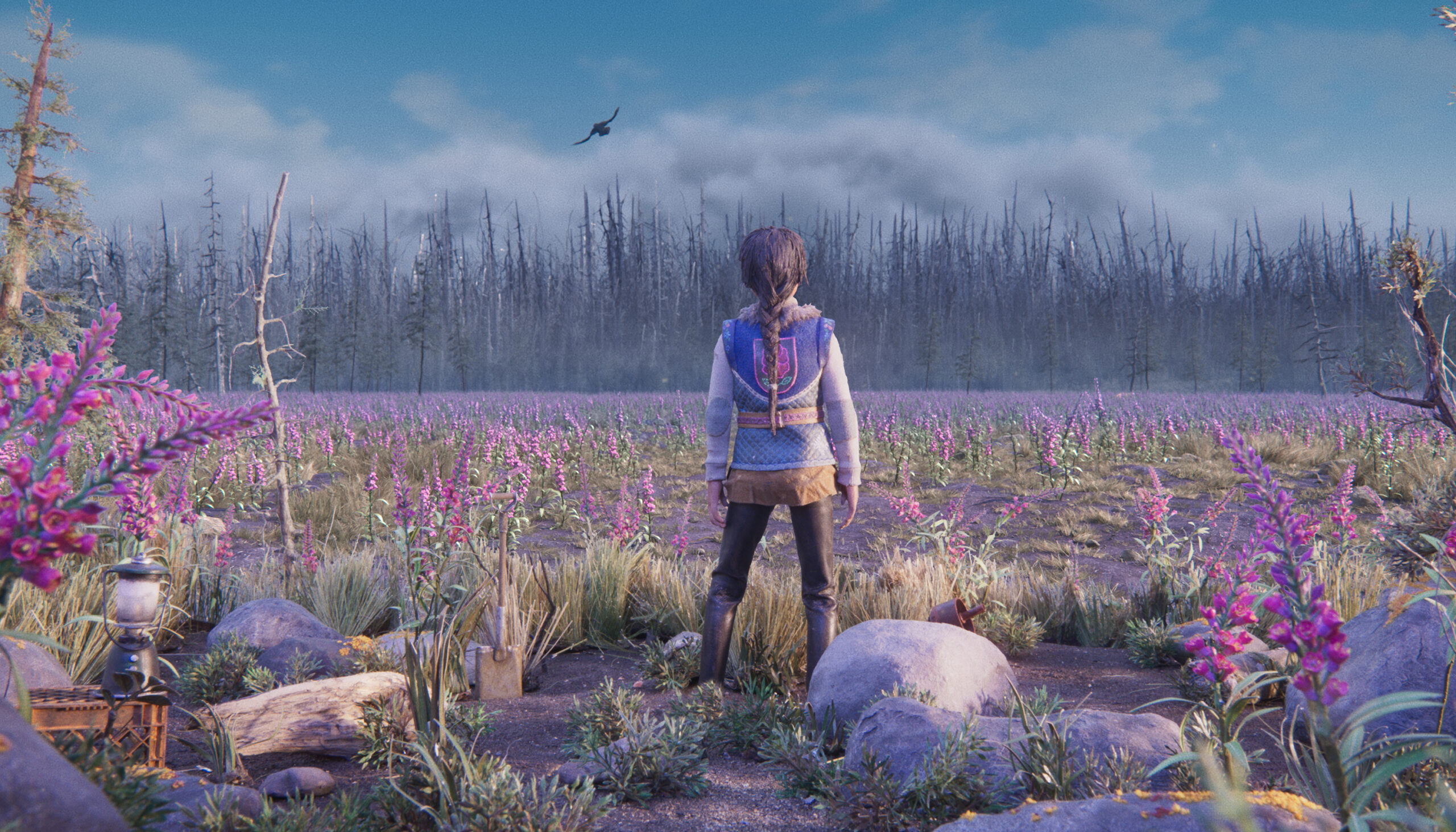Stop-motion animator creates immersive worlds for Indigenous stories
Amanda Strong is the Arts Research Center's fall artist-in-residence. She'll be screening her films on Oct. 30 and participating in an artist talk on Nov. 1 at BAMPFA.

Courtesy of Amanda Strong
October 30, 2024
Since she founded Spotted Fawn Productions in 2012, Indigenous stop-motion animator Amanda Strong, a Michif/Red River Métis member of the Manitoba Mètis Federation in Canada, has been telling stories that challenge colonial histories of Indigenous peoples. Her immersive films often take years to make, and each one plays a unique role in her life. Characters are rich with emotion as they navigate the modern world, guided by spirits and shapeshifters.

Courtesy of Amanda Strong
As the fall artist-in-residence at UC Berkeley’s Arts Research Center, Strong will be screening several of her works on Oct. 30, including her first film, Indigo, about a confined woman reliving her memories and life with the guidance of Grandmother Spider. She’ll also be giving a sneak peek at her newest film, Inkwo for When the Starving Return, a tale of the enduring power of truth that was adapted from an original short story by award-winning Tlicho Dene storyteller Richard Van Camp. After the screening, she’ll participate in a talk back with the audience.
On Nov. 1, Strong will join in an artist talk with Bracken Hanuse Corlett, an interdisciplinary artist from the Wuikinuxv and Klahoose Nations who works with ancestral forms and new media.
Both events will take place at the Berkeley Art Museum and Pacific Film Archive (BAMPFA) and are open to the public. Learn more about the artists and buy tickets on the Arts Research Center’s website.
In this UC Berkeley News Q&A, Strong discusses how to portray emotion in stop-motion animation and the importance of centering Indigenous practices in her work. It has been edited for length and clarity.
UC Berkeley News: How do you start a stop-motion film project?
Amanda Strong: Every project starts with a seed of an idea, whether it’s a personal story or, more often, an adaptation or collaboration with an Indigenous author or writer. From there, we develop the idea into a script, storyboard and a package that allows us to pitch for funding.
Once we secure funding, either partially or fully, we can begin to plan the production, budget and assemble the creative team. For stop-motion, especially within the context of an Indigenous studio, it’s crucial to balance finding specialized skills for the medium while also ensuring that Indigenous creative leads guide the process and train Indigenous artists.
Creating stop motion projects can take years, given our budgets and resources. It’s a long and challenging, and at times even painful, process. But it’s so rewarding when everything comes together.

Courtesy of Amanda Strong
What themes do you explore in your work?
Themes of our work tend to celebrate and explore language revitalization, gender diversity, connection to ceremony, colonial impacts of destruction and pollution of land and water, oral stories as truths. These are just some of the themes our work stands for. Many of the stories explore younger, gender-diverse Indigenous youth navigating the complexities of the modern world with guidance of shapeshifters and the spirit world.
Your work is deeply immersive and emotional. How do you create complex feelings and interactions in stop-motion animation?
My thought process is layered and interconnected, often allowing me to convey long and complex stories in a concise format. Capturing the essence of emotion and texture within the characters and the worlds we create is essential, as it plays a crucial role in building our teams. Finding artists and collaborators who resonate with each story we bring to life is important to me. Additionally, I believe that the combination of sound and image is vital in evoking emotions and enhancing the audience’s experience with our work.
What can you do with stop-motion film that you can’t do with any other medium?
I believe that stop-motion animation lends itself toward the unique creation of any world or vision, emphasizing the value of handmade artistry while allowing digital and computer technology to enhance rather than overshadow the process and outcome. This art form brings together various artistic disciplines and talents to collaboratively build a universe from words from a page. I love the opportunity to dream, share, learn and work alongside incredibly talented individuals to tell stories that resonate with us all.